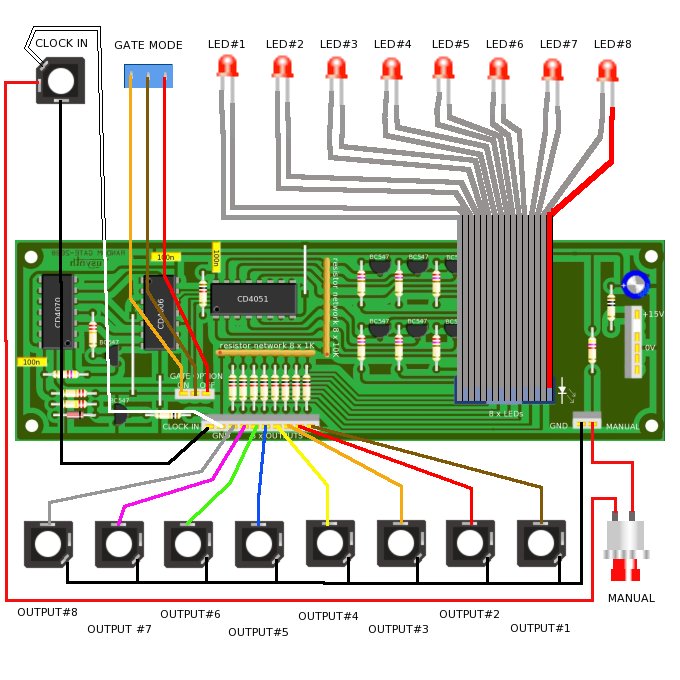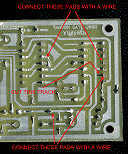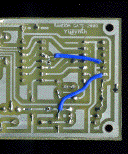| Modified : june. 6th. 200ç |
Octal Random Gates
|
 |
back to summary |
 |
 |
| Description |
| Modified : june. 6th. 200ç |
Octal Random Gates
|
 |
back to summary |
 |
 |
| Description |
|
 |
 |
Schematic |
 |
 |
 , , |
 |
List of parts and building instructions
|
|||||||||||||||||||||||||||||||||||||||||||||||||||||||||||||||||||||
|
|||||||||||||||||||||||||||||||||||||||||||||||||||||||||||||||||||||
| Wiring |
|||||||||||||||||||||||||||||||||||||||||||||||||||||||||||||||||||||
 |
 |
 |
 |
 |
Trimming
|
| This circuit requires no
trimming. It must work when powered on. NOTE : after powering up, the module needs at least ten clock cycles before it gets into the expected behaviour. |
 |
 |
Modifications of the old PCB
|
NOTE : these modifications are only
for those who built the circuit with the old PCB

 Remove the long strap between the
collector of Q1 (lowest transistor on the layout) and pin 3 of U1
(4006).
With an sharp knife cut the short track from pad 13 of U3 (4070), connect a short isolated wire between pad 11 of U3 and pad 3 of U1, connect a short isolated wire between pad 13 of U3 and the collector of Q1. |
 |
 |
  |
 |
  |
| Name
: Frédéric Monti Pseudo : Zarko Modular project : Location : Gardanne, France Website : |
Name
: Doug Slocum Pseudo : Modular project : SteamPunk Location : USA Website : www.dougslocum.com |
Name
: Steven Brenner Pseudo : Modular project : Location : Waterloo, Ontario, Canada Website : |
|
|||
 |
 |